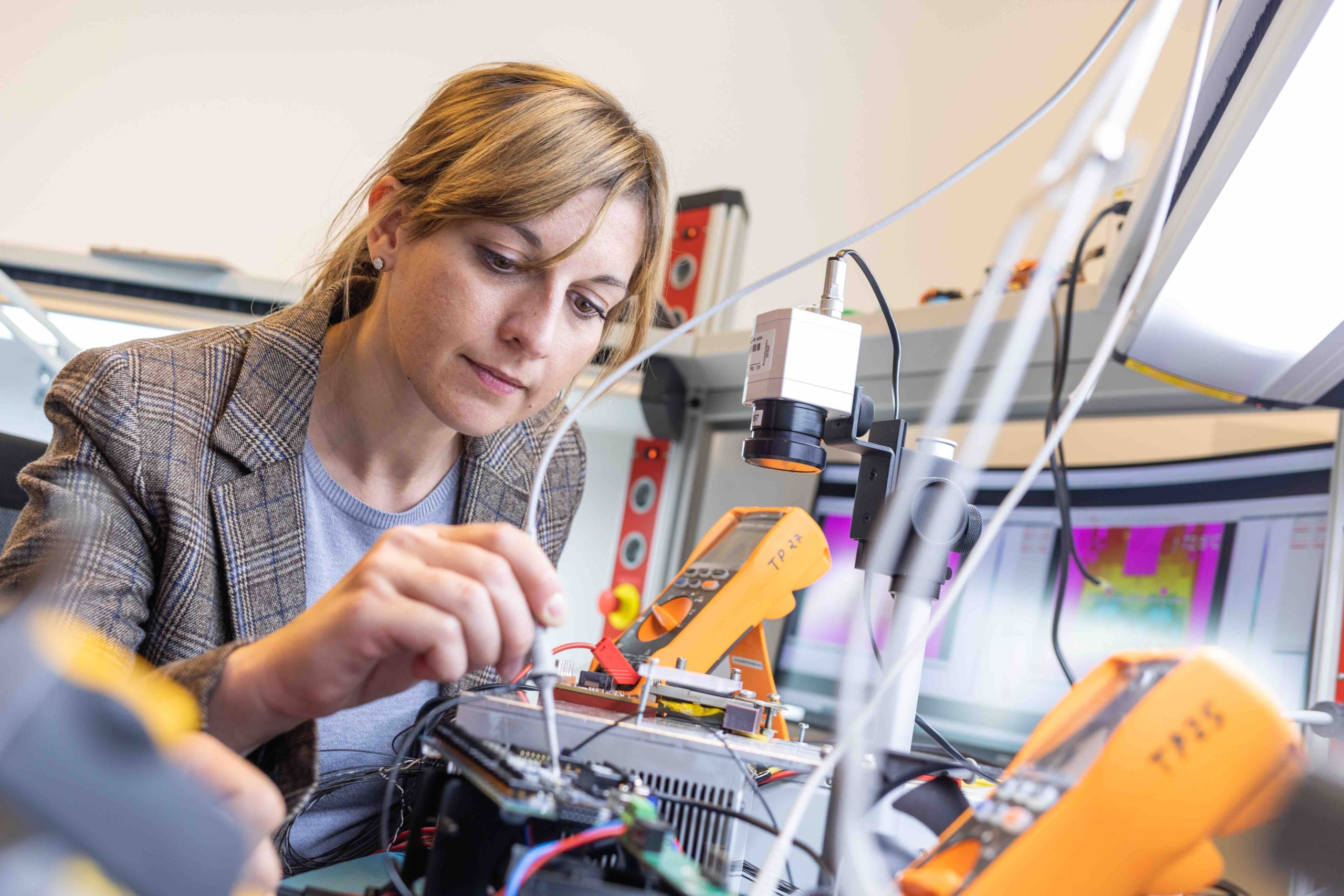Electrical energy undergoes many conversions from production to wall sockets, and each time energy is lost. Due to this, for instance, only approx. 50% of the energy from a wind farm actually arrives at the end user. Losses from these conversions have been continually reduced in the last decades, but they still amount to a high percentage of global electricity consumption.
Storage systems to balance out increasing fluctuations – e.g. through the integration of renewable sources – lead to additional conversion levels. This makes the use of high-efficiency power electronics ever more urgent. The increasingly available “wide-band gap” power semiconductors (based on gallium nitride and silicon carbide) enable markedly higher efficiency levels to be achieved at more compact sizes. A successful market penetration of these energy-saving devices requires a whole range of technical solutions in addition to lower prices.
Comprehensive optimisation of power semiconductors
The JOANNEUM Power Electronics Center has been concentrating on a comprehensive optimisation approach in relation to topologies, filters (including electromagnetic compatibility, EMC), advanced packaging and the associated dynamic controls on the basis of a combination of high-performance microprocessors and configurable logic (FPGA). The design of a highly efficient driver chip for eGaN® transistors should finally complement the approach to comprehensive circuit optimisation and, on top of this, support the formation of a strategic focus within the existing chip design group.







